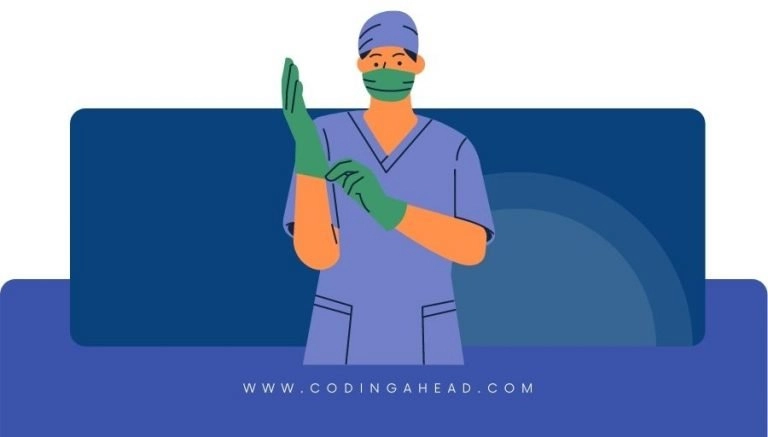How To Use CPT Code 21242
CPT code 21242 describes the arthroplasty of the temporomandibular joint (TMJ) using allograft material. This article will cover the description, procedure, qualifying circumstances, appropriate usage, documentation requirements, billing guidelines, historical information and billing examples.
1. What is CPT Code 21242?
CPT 21242 is used to describe the arthroplasty procedure performed on the temporomandibular joint (TMJ) using allograft material. The TMJ is the hinge that connects the lower jaw to the temporal bone of the skull. This code is used when a provider repairs, repositions, or replaces parts of the TMJ to improve the function of the jaw.
2. Official Description
The official description of CPT code 21242 is: ‘Arthroplasty, temporomandibular joint, with allograft.’
3. Procedure
During the arthroplasty procedure for the TMJ, the provider begins by making an incision over the joint area in front of the ear. They then expose the fascial tissue layer to examine the TMJ capsule. The provider carefully examines the articular disk and the bony surfaces of the TMJ. If the disk is healthy, they may reposition it and suture it in place. If the disk is stretched out, they may excise a wedge of tissue from behind the disk and suture the edges together. In cases where the disk is damaged beyond repair, the provider may completely remove the articular disk and fill the resulting space with allograft cartilage. The joint is then irrigated, checked for bleeding, instruments are removed, and the incision is closed.
4. Qualifying circumstances
CPT 21242 is performed on patients who require arthroplasty of the TMJ using allograft material. This procedure is typically performed to improve the function of the jaw in patients with TMJ disorders or dysfunctions. The use of allograft material allows for repair, repositioning, or replacement of parts of the TMJ to restore proper function. It is important to note that some insurers may require preauthorization for this procedure, and coverage may be limited to specific impairments that significantly alter joint functioning.
5. When to use CPT code 21242
CPT code 21242 should be used when a provider performs arthroplasty of the TMJ using allograft material. This code is appropriate when the procedure involves repairing, repositioning, or replacing parts of the TMJ to improve the function of the jaw. It is important to review the specific documentation requirements and guidelines provided by insurance carriers to ensure accurate reporting and reimbursement.
6. Documentation requirements
To support a claim for CPT code 21242, the provider must document the following information:
- Patient’s diagnosis and the need for arthroplasty of the TMJ
- Details of the procedure performed, including the use of allograft material
- Date of the procedure
- Incision site and approach
- Findings during the procedure, such as the condition of the articular disk and bony surfaces of the TMJ
- Description of any repair, repositioning, or replacement performed
- Use of allograft material and its source
- Post-procedure care instructions
- Signature of the provider performing the procedure
7. Billing guidelines
When billing for CPT code 21242, it is important to ensure that the procedure meets the specific criteria outlined in the code description. The use of allograft material is a key component of this procedure. Providers should review the specific billing guidelines provided by insurance carriers to ensure accurate reporting and reimbursement. It is also important to note that some insurers may have specific requirements for preauthorization of this procedure.
8. Historical information
CPT code 21242 was added to the Current Procedural Terminology system on January 1, 1990. There have been no updates or changes to the code since its addition.
9. Similar codes to CPT 21242
There are several similar codes to CPT 21242 that describe other repair, revision, and reconstruction procedures on the head. These codes include:
- CPT 21120: Arthroplasty, temporomandibular joint, with autograft
- CPT 21121: Arthroplasty, temporomandibular joint, with alloplast
- CPT 21122: Arthroplasty, temporomandibular joint, with autograft and alloplast
- CPT 21210: Reconstruction of temporomandibular joint with other than autogenous materials
- CPT 21215: Reconstruction of temporomandibular joint with autogenous graft
9. Examples
- A patient with severe TMJ dysfunction undergoes arthroplasty of the TMJ using allograft material to repair and reposition the articular disk.
- A provider performs arthroplasty of the TMJ using allograft material in a patient with TMJ osteoarthritis to replace damaged parts of the joint.
- An individual with a history of TMJ trauma undergoes arthroplasty of the TMJ using allograft material to reconstruct the joint and improve function.
- A patient with TMJ ankylosis undergoes arthroplasty using allograft material to release adhesions and restore mobility to the joint.
- A provider performs arthroplasty of the TMJ using allograft material in a patient with TMJ disc displacement to reposition the articular disk and improve joint function.
- An individual with TMJ degenerative joint disease undergoes arthroplasty using allograft material to repair and replace damaged parts of the joint.
- A patient with TMJ internal derangement undergoes arthroplasty using allograft material to repair and reposition the articular disk.
- A provider performs arthroplasty of the TMJ using allograft material in a patient with TMJ ankylosis to release adhesions and restore mobility to the joint.
- An individual with TMJ osteoarthritis undergoes arthroplasty using allograft material to replace damaged parts of the joint and improve function.



